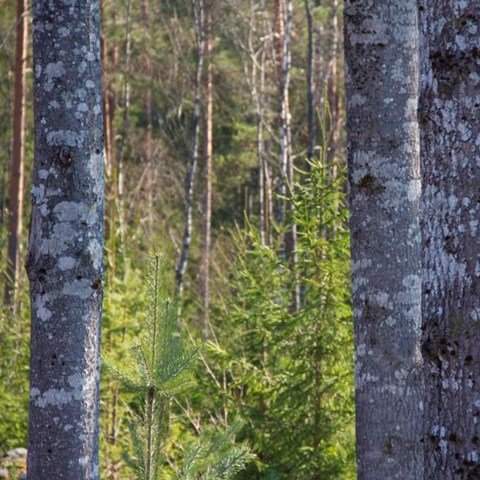In her thesis Åsa Ranlund has analyzed the responses of epiphytic lichens to the environmental change on retained trees when the surrounding forest is clearcut. She has also analyzed the responses of saproxylic beetles to stump extraction in the landscape.
Overall, there is a wide variety of species responses, and they can be difficult to predict. Sometimes tree traits, such as successional strategy, can help predict the responses of tree-associated species to environmental change. Sometimes the traits of the tree-associated species themselves can drive their response to environmental change.
For lichens, species associated with the late-successional Norway spruce occur less on trees retained at clearcuts than on trees in closed-canopy forest. The pattern is the opposite for lichen species associated with early-successional tree species. Some lichen traits can also drive species responses to the open environment after clearcutting; characteristics that seem to increase the probability of lichens to occur on trees retained at clearcutting are a foliose or fruticose growth form, thallus sunscreen, or asexual reproduction. The responses of saproxylic beetles to landscape stump extraction varies, with predators more negatively affected than lower trophic levels.
In an attempt to elucidate different aspects of the distribution of responses, she suggests ways to develop the concept of response diversity. The diverging responses of species to forest management entails different requirements for their conservation.
